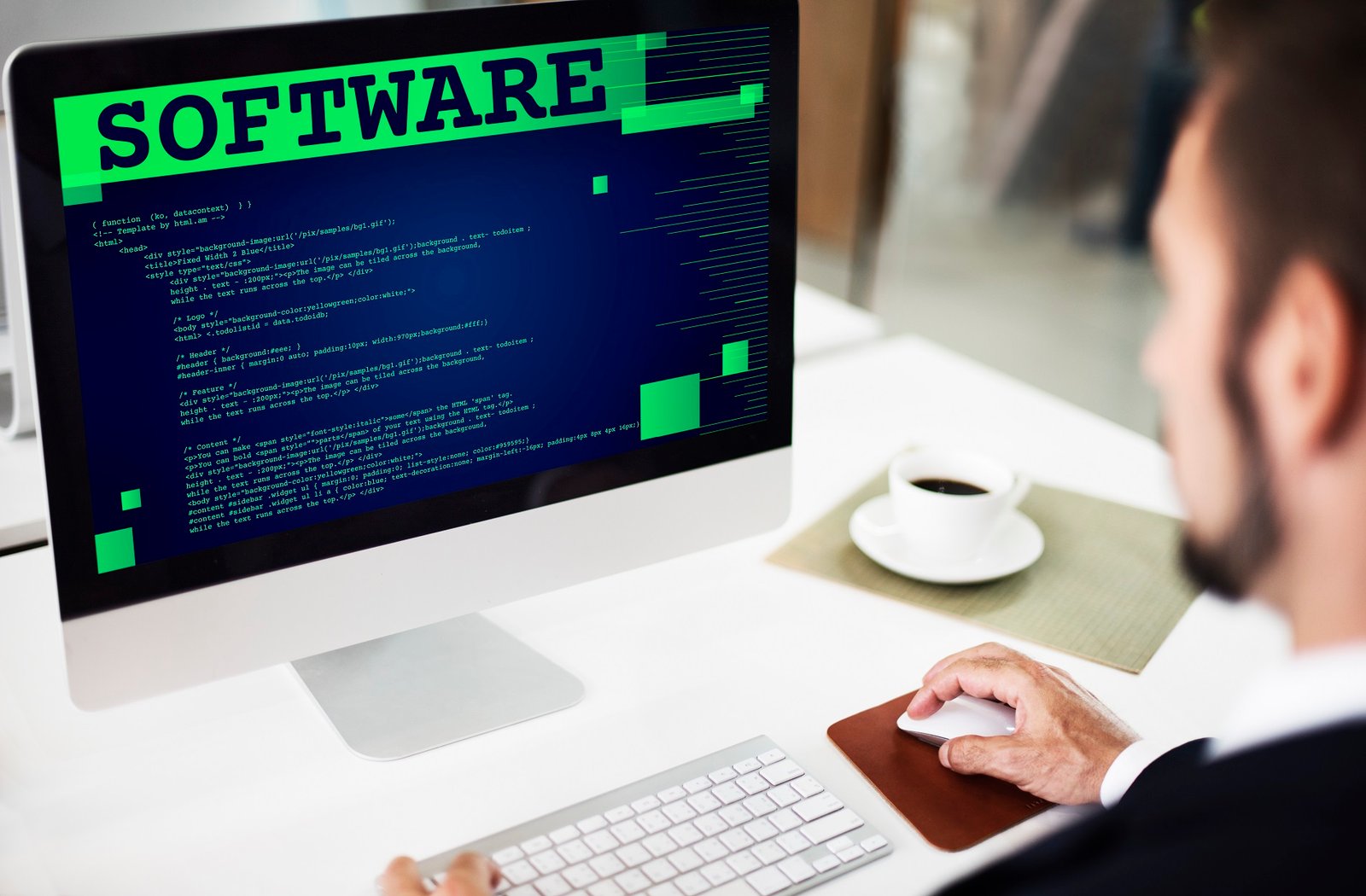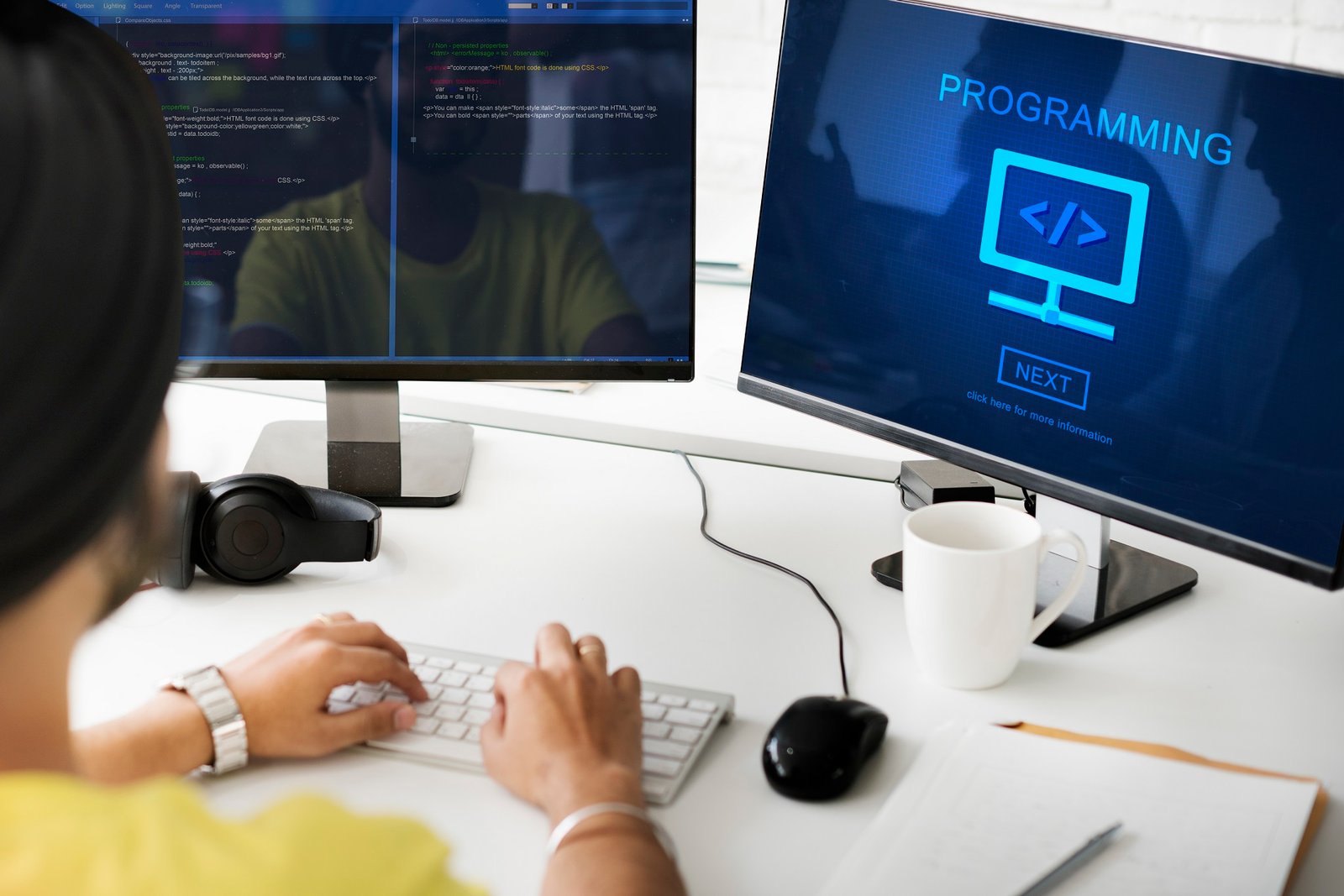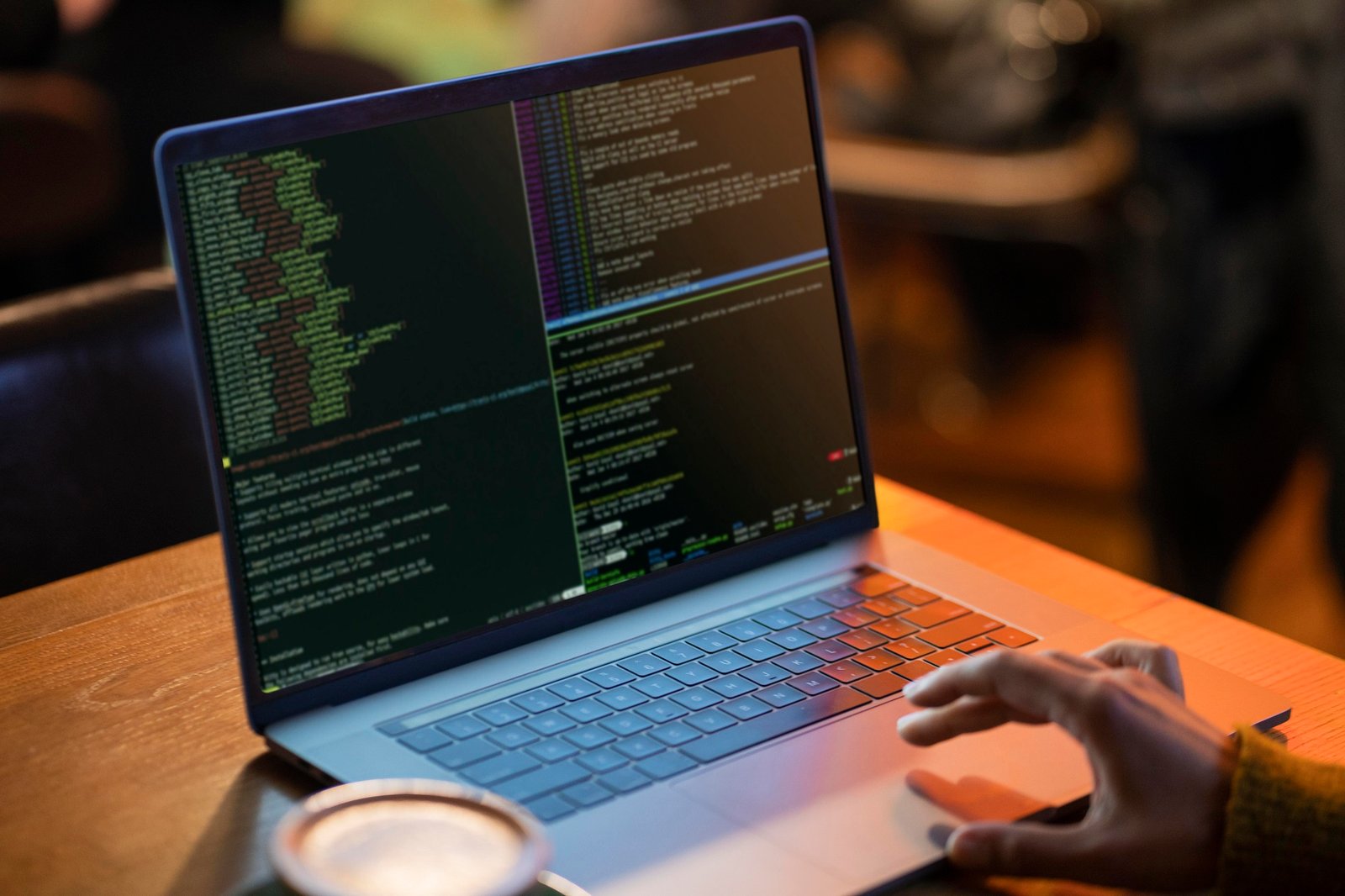PC Specifications for Python Programming
Introduction
Having a suitable PC is necessary rather than a luxury for Python programming. Whether you’re a novice learning the ropes or a seasoned developer working on challenging projects, the specs of your machine will significantly affect your efficiency and output. In this post, we’ll dissect the ideal PC specs for Python programming so you have the correct tools to manage anything from basic scripts to complex data science projects. Also Read Life in 2050 with AI: [ The Future AI ]
Understanding Python Programming Requirements
Before delving into the hardware specifications, one must first grasp what Python programming usually requires from a machine. Python is a flexible language for web development, data analysis, artificial intelligence (AI), machine learning (ML), and automation, among other projects. Although these chores have unique system needs, most Python applications follow broad rules.

Processor (CPU) Requirements
Why CPU Matters for Python Programming
The CPU is the heart of your computer and is important in Python programming. Python is an interpreted language; hence, the speed at which your code executes usually directly corresponds to the performance of your CPU. The CPU is mostly used in tasks including running scripts, compiling codes, and doing computations.
Recommended CPU Specifications
When choosing a CPU for Python programming, look for a balance between core count and clock speed. While Python can benefit from multiple cores, most tasks utilise up to four simultaneously. Thus, a quad-core processor with a high clock speed is typically ideal.
Intel vs. AMD for Python Programming
Intel and AMD have both outstanding CPUs for Python development. For most Python operations, Intel processors—known for their single solid—core performance—are helpful. Conversely, AMD’s Ryzen line provides more cores at a comparable cost, which would help multitask or run several concurrent programs.
Multi-core vs. Single-core Performance
While Python can leverage multi-core CPUs, the language’s Global Interpreter Lock (GIL) often limits the performance gains from additional cores. Therefore, higher single-core performance is usually more critical unless you run parallel processes or use Python for tasks that explicitly benefit from multiple cores, such as specific data processing or scientific computing tasks.

Memory (RAM) Requirements
How Much RAM Do You Need?
RAM is another critical factor in determining your PC’s performance for Python programming. The amount of RAM you need depends on the complexity of your projects. For essential Python development, 8GB of RAM is sufficient. However, if you’re working with large datasets, engaging in data science, or running virtual machines, 16GB or more is recommended.
Recommended RAM Specifications
Aim for 8GB of RAM at minimum for general-purpose Python programming. For data science, machine learning, or any work involving large datasets, 16GB to 32GB of RAM is ideal.
The Impact of RAM on Python Performance
RAM lets your computer access and store data fast. Should your system require additional RAM, it will consume much slower swap space on your hard disk. Your Python scripts may thus execute slowly, particularly for memory-intensive chores like data processing.
Upgradability Considerations
Think about the RAM upgradability of your PC or building one. As your Python projects become more demanding, some laptops and desktops let you simply replace RAM, which might be a cheap approach to extend the life of your PC.
Storage Requirements

SSD vs. HDD: Which is Better for Python?
Regarding storage, SSDs—Solid-State Drives—are far faster than conventional HDDs—Hard Drives. Your Python programming experience will be much better if you use an SSD to load your IDE, boot your system, and access huge files, drastically shortening the time required.
Recommended Storage Capacity
Python programming calls for at least 256GB of storage. However, if you must keep many virtual machines or deal with big datasets, consider choosing 512GB or 1TB.
The Role of Storage Speed in Programming
Everything, including the speed of loading applications, depends on the performance of your storage drive—including file-saving times. Particularly helpful when dealing with big projects or datasets, an SSD will make your system more responsive and cut the waiting time for files to load or save.
External Storage Options
For additional storage, consider using external SSDs or HDDs. External drives are a flexible option for backing up projects, storing large datasets, or managing multiple Python environments.

Graphics Card (GPU) Considerations
Do You Need a Dedicated GPU for Python?
For most Python programming tasks, a dedicated GPU is not necessary. Python relies more on the CPU and RAM. However, a powerful GPU can significantly accelerate tasks like training models if you’re involved in machine learning, deep learning, or any form of AI.
GPU vs CPU: When Does GPU Matter?
GPUs are perfect for jobs like neural network training in deep learning, which requires processing vast volumes of data concurrently. Since they shine in parallel computing, GPUs are ideal for these jobs. A GPU will help developers working in artificial intelligence or data science considerably cut the required training model time.
Recommended GPU specs for artificial intelligence and data science
If data science or artificial intelligence appeal to you, consider a GPU with at least 6GB of VRAM. NVIDIA’s CUDA-enabled GPUs are highly recommended for these chores because they work well with widely used machine-learning libraries like TensorFlow and PyTorch.
Integrated Graphics vs. Dedicated Graphics
For general Python programming, integrated graphics are typically sufficient. However, a dedicated GPU will provide better performance if you plan to engage in machine learning or gaming on the side.

Operating System (OS) Choices
Windows, macOS, or Linux: Which is Best?
Each operating system has its strengths and weaknesses for Python programming. Windows is user-friendly and widely supported, macOS offers a Unix-based environment similar to Linux, and Linux provides developers the most control and flexibility.
Compatibility and Support Considerations
Python is cross-platform, meaning it works on Windows, macOS, and Linux. However, some libraries and tools may be easier to install and use on one OS over another. Linux, for example, is often preferred for server environments and offers a package manager that simplifies the installation of Python packages.
Python Development on Windows
Windows is a popular choice for Python development, especially for beginners. Tools like Anaconda, PyCharm, and VS Code are well-supported, and the OS is compatible with a wide range of software.
Python Development on Linux
Many developers favour Linux for its performance, security, and open-source nature. It’s particularly well-suited for Python due to its native support and the ease of managing Python environments through tools like virtualenv and pip.
Display and Monitor Considerations
Why Display Quality Matters
The display is often overlooked, but it is crucial to your programming comfort and efficiency. A good monitor can reduce eye strain and provide enough screen real estate to manage multiple windows or applications simultaneously.
Recommended Monitor Specifications
Look for a monitor with at least 1080p resolution. For those who spend long hours coding, a monitor with IPS technology and a high refresh rate can provide better viewing angles and reduce eye fatigue.
Multi-monitor Setups for Python Developers
If you frequently multitask, consider a dual or even triple monitor setup. Multiple monitors allow you to keep your IDE, documentation, and terminal open simultaneously, improving workflow efficiency.
Resolution and Screen Size
A 24-inch monitor with 1080p resolution is a good starting point. If you need more screen space, consider a 27-inch or even a 4K monitor, which provides more pixels for a sharper image.

Peripheral Devices
Keyboards, Mice, and More
A comfortable keyboard and mouse can significantly improve your programming experience. Mechanical keyboards are popular among programmers because they provide tactile feedback, while ergonomic mice can reduce wrist strain.
External Tools for Python Programmers
Consider additional tools like a tablet for sketching ideas, a webcam for virtual meetings, or an external microphone for recording tutorials.
Portability: Laptop vs. Desktop
Pros and Cons of Laptops for Python Programming
Laptops offer the advantage of portability, allowing you to code anywhere. Modern laptops are powerful enough to handle most Python programming tasks but may need more desktop upgrades and raw power.
Pros and Cons of Desktops for Python Programming
Desks are perfect for demanding jobs like data science or machine learning because they provide superior performance, upgradability, and cooling. However, they consume more space and are less portable.
Battery Life Considerations for Laptops
Should you choose a laptop, consider its battery life. Particularly when working on the go, a longer battery life guarantees you can code without reliance on a power outlet.
Upgrade and Expansion Options for Desktops
Desktops allow you to upgrade components like the CPU, GPU, and RAM more easily than laptops, making them a better choice for future-proofing.

Networking and Internet Requirements
The Importance of Reliable Internet
A reliable internet connection is essential for downloading libraries, accessing online documentation, and collaborating on projects.
Wired vs. Wireless Connections
Consider using a wired Ethernet connection for the most stable and fastest internet connection. Wireless connections offer convenience, but they can be less stable and slower.
Budget Considerations
Balancing Cost and Performance
It’s crucial to balance your budget with the performance you need. While going for the highest specs is tempting, consider what you’ll use. For most Python programming tasks, a mid-range PC will suffice.
Building a Custom PC vs. Buying Pre-built
Building a custom PC can be more cost-effective and tailored to your needs. However, pre-built PCs offer convenience and often come with a warranty, which can be a safer option for those unfamiliar with PC building.
Future-proofing Your PC
Preparing for Future Python Projects
Consider the potential growth of your Python projects. If you plan to delve into data science or AI, investing in a more powerful CPU and GPU is wise.
Upgradability and Longevity
Choose a PC that allows easy upgrades, such as adding more RAM or swapping out the GPU. This ensures that your system remains relevant and powerful enough for future tasks.

Example PC Builds for Python Programming
Here are some examples of builds that suit different budgets and needs.
Budget Build
- CPU: AMD Ryzen 5 3600
- RAM: 8GB DDR4
- Storage: 256GB SSD
- GPU: Integrated Graphics
- OS: Windows 10
Mid-range Build
- CPU: Intel Core i7-10700
- RAM: 16GB DDR4
- Storage: 512GB SSD
- GPU: NVIDIA GTX 1660 Ti
- OS: Windows 10
High-end Build
- CPU: AMD Ryzen 9 5900X
- RAM: 32GB DDR4
- Storage: 1TB SSD
- GPU: NVIDIA RTX 3080
- OS: Windows 10
Conclusion
Selecting a PC fit for Python programming strikes a compromise between future-proofing, performance, and cost. Considering CPU, RAM, storage, and peripherals can help you create or buy a PC that fits your present requirements and can handle the following tasks. The suitable PC may make all the difference in your programming experience, whether you are building sophisticated machine learning models or basic scripts.
FAQs
Can I program in Python on an old PC?
You can program in Python on an older PC, but performance could be hampered, particularly for more involved projects. Changing to an SSD or upgrading your RAM will boost speed.
How much RAM is necessary for data science in Python?
At least 16GB of RAM is recommended for data science in Python. 32GB or more may be necessary if you’re working with large datasets.
Do I need a powerful GPU for machine learning in Python?
A powerful GPU benefits machine learning tasks, especially for training deep learning models. However, it is not necessary for general Python programming.
Which is better for Python, Intel or AMD?
For Python, Intel and AMD have both outstanding CPUs. While AMD offers higher multi-core performance at a comparable cost, Intel CPUs are well-known for their solid single-core performance.
Is Linux better than Windows for Python development?
Linux is often preferred for Python development due to its performance, security, and open-source nature. However, Windows is also a viable option, especially for beginners.
